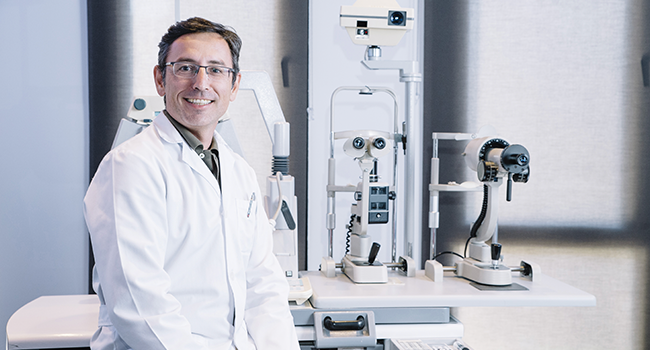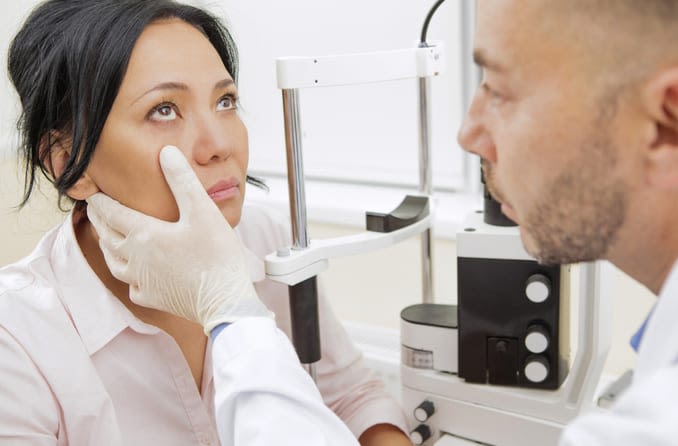Leading Reasons to Visit an Optometrist Chino for Your Eye Health
Leading Reasons to Visit an Optometrist Chino for Your Eye Health
Blog Article
Exploring the current Technical Innovations in Optometry and What They Mean for Eye Doctors
In the ever-evolving field of optometry, current technological improvements are reshaping just how specialists come close to eye treatment. From the precision of Optical Comprehensibility Tomography to the nuanced insights offered by AI-driven analysis devices, these advancements are establishing new criteria in individual assessment and therapy. Teleoptometry is poised to redefine ease of access, ensuring that competence transcends geographical constraints. As these improvements permeate the method, eye doctors are confronted with the challenge of accepting these tools to enhance person results. The inquiry remains: exactly how will these technical shifts redefine the functions and duties within the profession?
Technologies in Diagnostic Devices
Advancing the field of optometry, innovations in analysis tools have reinvented the method eye treatment specialists analyze and detect eye conditions and visual impairments. The previous decade has actually seen significant technical developments, enabling more exact and extensive assessments.
Another trick advancement is the intro of innovative corneal topography systems, which map the surface curvature of the cornea with accuracy. These tools are especially advantageous for fitting call lenses and diagnosing corneal conditions. In addition, digital retinal imaging has actually changed conventional ophthalmoscopy, using comprehensive, scenic sights of the retina that promote thorough aesthetic assessments.
The development of wavefront aberrometry has also been vital, making it possible for the evaluation of refractive mistakes with unrivaled precision (Optometrist Chino). This technology helps in personalizing restorative lenses and boosting medical outcomes for refractive surgical procedures. Collectively, these analysis advancements encourage optometrists to deliver superior client care, ensuring very early treatment and tailored treatment methods, inevitably boosting aesthetic health outcomes
AI in Person Monitoring
Structure on the structure of sophisticated analysis tools, the unification of man-made intelligence (AI) in patient management stands for a transformative leap for optometry. AI systems are significantly utilized to improve effectiveness, accuracy, and customization in patient care. By assessing huge amounts of data, AI can identify patterns and forecast prospective eye problems, allowing optometrists to customize interventions more successfully. This capacity is crucial in taking care of persistent eye illness such as glaucoma and diabetic retinopathy, where very early detection and continuous surveillance are essential.
In addition, AI-driven platforms facilitate streamlined individual interactions and management processes. Automated scheduling, digital examinations, and personalized follow-up plans not just boost individual fulfillment but likewise maximize time management for specialists. These systems can triage patients based on the urgency of their conditions, making sure that those in important demand get timely focus.
Furthermore, AI enhances decision-making by supplying eye doctors with evidence-based referrals and treatment paths. By integrating data from electronic health records, AI tools use understandings that educate clinical decisions, reducing the risk of errors and enhancing individual outcomes. As AI remains to develop, its function in individual monitoring will likely expand, improving the landscape of optometric care.
Advancements in Retinal Imaging
In the world of optometry, retinal imaging has witnessed amazing technological advancements that are boosting diagnostic capabilities and individual treatment. Developments such as Optical Coherence Tomography (OCT) and fundus digital photography have actually changed exactly how optometrists analyze the retina and picture.
Improved imaging methods like OCT angiography are further refining analysis precision. Eye Doctor. Such innovations facilitate the identification of minute retinal modifications that can represent illness progression.
In addition, advancements in fabricated knowledge are enhancing retinal imaging by making it possible for automated evaluation of large datasets. These systems help eye doctors in recognizing patterns indicative of pathology, consequently enhancing diagnostic accuracy and effectiveness. Jointly, these developments are changing retinal imaging right into a foundation of modern-day eye care, improving results and broadening healing possibilities.
Teleoptometry's Expanding Function
Teleoptometry is increasingly becoming imp source a vital component of eye care, driven by innovations in electronic communication and diagnostic devices. This is specifically useful in underserved and country locations where access to specialized eye treatment is frequently limited.
The assimilation of fabricated knowledge (AI) additional enhances teleoptometry, making it possible for the analysis of aesthetic information and assisting in the detection of eye conditions such as glaucoma and diabetic retinopathy. AI-powered algorithms can quickly interpret complicated imaging data, offering eye doctors with important understandings that strengthen clinical decision-making.
Additionally, teleoptometry sustains continuity of treatment through seamless assimilation with electronic health records (EHRs), permitting eye doctors to preserve extensive patient histories. When seeking advice from with different professionals., this makes certain that people get consistent and tailored treatment also.
Despite these advantages, challenges stay, consisting of ensuring data safety and security and taking care of person expectations. Nevertheless, teleoptometry represents a significant stride towards more easily accessible, reliable, and patient-centered eye treatment. As technology progresses, its role is poised to expand better.

Future Fads in Eye Treatment
A myriad of innovative fads is set to improve the future of eye treatment, driven by technological innovations and the developing demands of individuals. One considerable pattern is the combination of expert system (AI) in diagnostics, which assures to improve the precision and performance of eye assessments. AI algorithms can evaluate vast amounts of data from retinal images, possibly spotting conditions like diabetic retinopathy and glaucoma earlier than conventional methods.
Moreover, personalized medication is getting traction in optometry, with genetic screening educating personalized treatment strategies. This technique intends to optimize person results by tailoring treatments to helpful site private hereditary profiles. Wearable modern technology, such as wise call lenses, is additionally imminent, providing real-time surveillance of intraocular pressure or sugar degrees, therefore giving constant understandings right into systemic and ocular wellness.
The fostering of enhanced fact (AR) and digital fact (VIRTUAL REALITY) in training and patient education and learning is one more emerging fad. These modern technologies use immersive experiences that can boost understanding and skills both for optometrists and people. As these patterns evolve, eye doctors need to stay abreast of technical innovations to offer innovative care, ensuring better individual outcomes and complete satisfaction in the dynamic landscape of get redirected here eye care.
Verdict

Collectively, these diagnostic improvements equip optometrists to supply remarkable client care, ensuring very early intervention and customized treatment strategies, inevitably enhancing visual wellness results.

As these innovations proceed to evolve, optometrists need to adjust and incorporate them into technique, inevitably optimizing process efficiency and raising the criterion of eye treatment provided to individuals.
Report this page